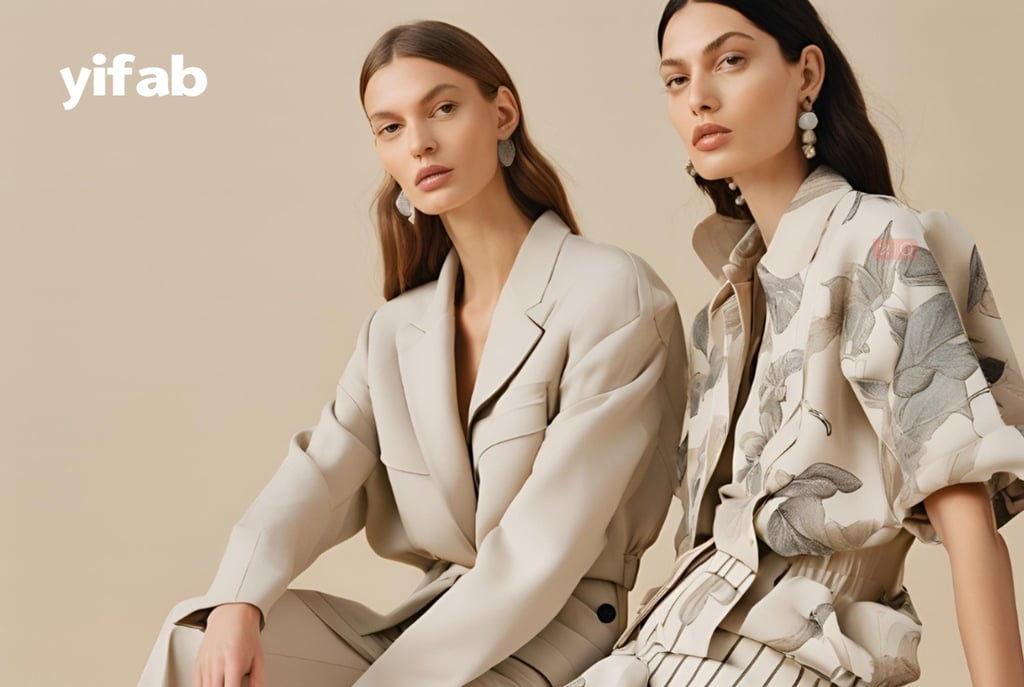The Top 5 Sustainable Fabrics Revolutionizing the Fashion Industry
9/30/20242 мин чтение


As consumers become more conscious of the environmental impact of fashion, sustainable fabrics are playing a critical role in reshaping the industry. Brands are increasingly shifting away from synthetic, resource-intensive materials and embracing eco-friendly alternatives. Here, we explore the top five sustainable fabrics that are revolutionizing modern fashion, focusing on their benefits and uses.
1.Organic Cotton
Organic cotton is one of the most popular sustainable fabrics, and for good reason. Unlike conventional cotton, organic cotton is grown without the use of harmful pesticides, herbicides, or synthetic fertilizers. This reduces environmental pollution and promotes healthier soil. Additionally, organic cotton farming consumes significantly less water compared to traditional cotton farming methods.
Benefits:
- Reduced environmental impact
- Non-toxic and safer for both farmers and consumers
- Soft, breathable, and hypoallergenic
Uses:
Organic cotton is widely used in casual wear, such asT-shirts,jeans, andbedding. It’s an ideal fabric for those seeking comfort and eco-friendliness in their everyday wardrobe.
2.Tencel (Lyocell)
Tencel, also known as Lyocell, is a fiber made from wood pulp, typically sourced from sustainably managed forests. Its production process uses a closed-loop system, where almost all the water and solvents are recycled, minimizing waste and environmental damage. Tencel is prized for its silky smooth texture and breathability, making it a versatile fabric in modern fashion.
Benefits:
- Biodegradable and eco-friendly production process
- Soft, smooth, and highly absorbent
- Naturally resistant to wrinkles and odors
Uses:
Tencel is commonly used in makingactivewear,casual dresses, andintimate apparel, offering both comfort and sustainability.
3.Hemp
Hemp is an incredibly durable and sustainable fabric that has been used for centuries. It requires very little water to grow and is naturally resistant to pests, making it one of the most eco-friendly crops. The plant also enriches the soil, making it a regenerative agricultural product. Hemp fabrics are strong, breathable, and soften with each wash.
Benefits:
- Minimal water and pesticide use
- Highly durable and long-lasting
- Naturally resistant to mold and UV rays
Uses:
Hemp is ideal foroutdoor wear,denim, andaccessories such as bags and hats, thanks to its strength and durability.
4.Recycled Polyester
Recycled polyester is made from post-consumer plastic waste, like plastic bottles, which are broken down and spun into fibers. This process reduces the need for virgin polyester, cutting down on the use of petroleum and lowering carbon emissions. Recycled polyester retains the same qualities as conventional polyester but with a smaller environmental footprint.
Benefits:
- Diverts plastic waste from landfills and oceans
- Less energy and resources used in production
- Strong, durable, and quick-drying
Uses:
Recycled polyester is commonly used inathletic wear,outerwear, andaccessories likebackpacks andshoes due to its resilience and moisture-wicking properties.
5.Bamboo
Bamboo is another sustainable option gaining traction in the fashion industry. The plant grows quickly without the need for pesticides or much water. Bamboo fabric, particularly when made through eco-friendly processes, is soft, breathable, and highly absorbent. It also has natural antibacterial properties, making it ideal for sensitive skin.
Benefits:
- Fast-growing and renewable
- Naturally antibacterial and hypoallergenic
- Soft and breathable
Uses:
Bamboo fabric is often used inundergarments,loungewear, andeco-friendly activewear due to its comfort and absorbency.
Conclusion
Sustainable fabrics likeorganic cotton,Tencel,hemp,recycled polyester, andbamboo are transforming the fashion industry by reducing environmental impact and offering consumers eco-friendly choices. As more brands adopt these materials, the future of fashion looks greener and more responsible. By choosing garments made from these fabrics, consumers can support sustainable practices while still enjoying high-quality, stylish clothing.
